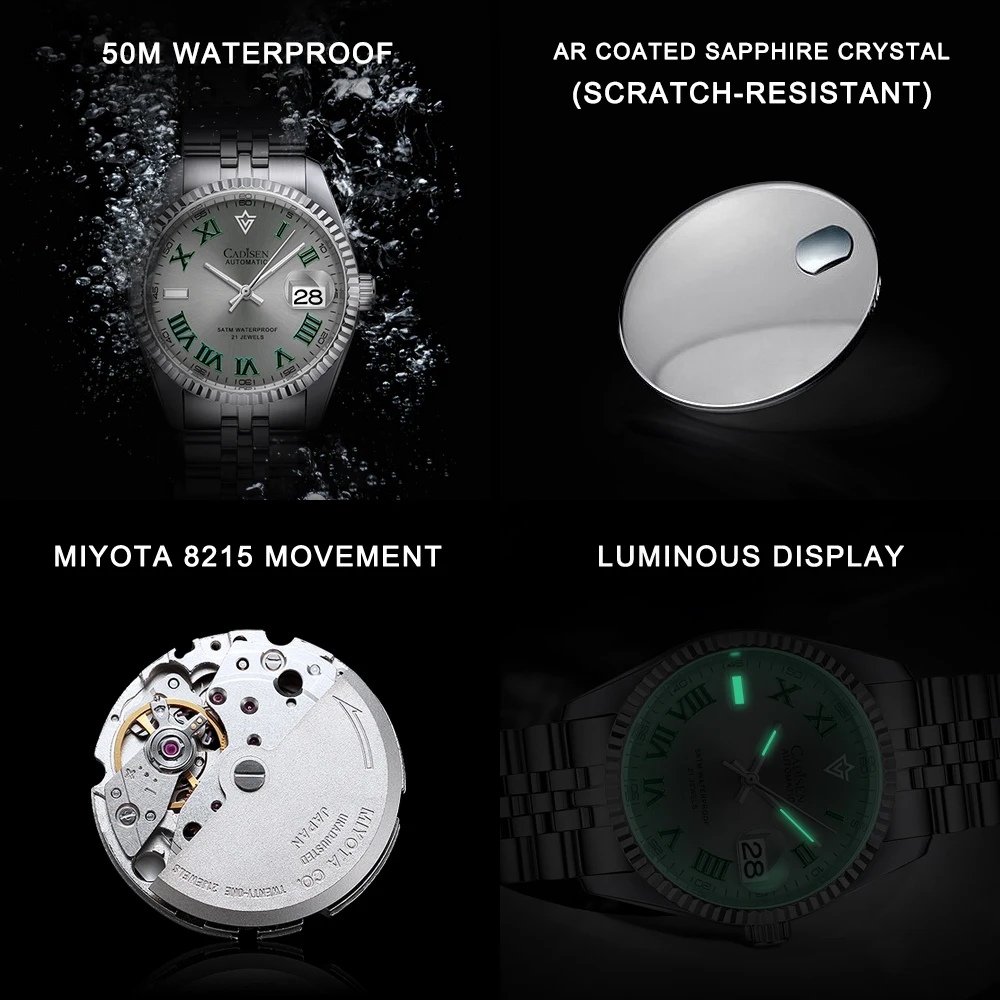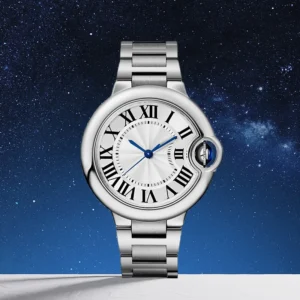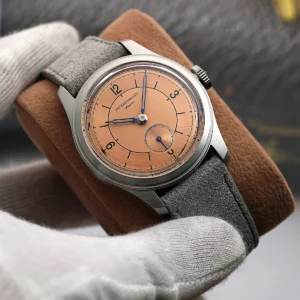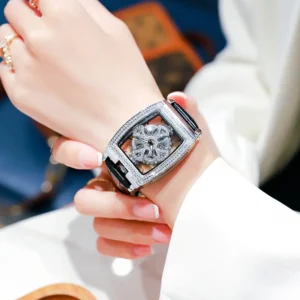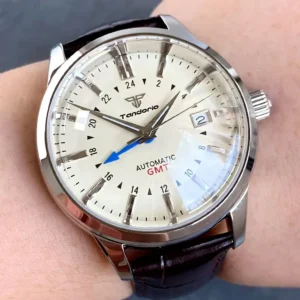The Philosophy and Heritage of Classic Dress Watches
A classic dress watch represents the perfect marriage of form and function, defined by its understated elegance, minimalist approach, and refined aesthetics. Unlike their more robust counterparts, dress watches whisper rather than shout, making a statement through their subtle sophistication and timeless appeal.
The evolution of the dress watch began in the early 20th century, marking a significant transition from pocket watches to wristworn timepieces. What started as a practical solution for officers during wartime gradually found its way into formal settings. By the 1920s, the wristwatch had begun to replace the pocket watch as the gentleman’s timepiece of choice for formal occasions.
Throughout this transformation period, the underlying philosophy remained consistent: a proper dress watch should complement formal attire without drawing undue attention. The distinct features of dress watches evolved from this principle, creating timepieces that enhance rather than compete with one’s appearance.
What makes the classic dress watch remarkable is its enduring relevance. Despite dramatic shifts in fashion trends and technological advancements in watchmaking, the fundamental design elements have remained largely unchanged. This timeless quality allows vintage models from decades past to look just as appropriate with today’s formal attire as they did when first created.
Essential Characteristic #1: Slim and Proportional Case Design
The most immediate identifying feature of a true dress watch is its slim profile. This characteristic isn’t merely aesthetic—it serves the practical purpose of allowing the watch to slide effortlessly under a shirt cuff, maintaining the clean lines of formal attire.
A proper dress watch typically measures:
– Case thickness: 6-10mm, rarely exceeding 12mm
– Case diameter: 34-40mm for men’s models (historically even smaller)
– Lug-to-lug distance: Proportional to the wrist, typically 44-48mm
This slender profile stands in stark contrast to sports watches, which often feature cases 13-15mm thick or more. The difference becomes immediately apparent when attempting to pair a bulky dive watch with formal attire—the watch fights against the cuff rather than complementing it.
Traditional case shapes include:
– Round: The most common and universally appropriate
– Rectangular: Offering a distinctive geometric alternative
– Tonneau (barrel-shaped): Providing elegant wrist curvature
Case materials also play a crucial role in defining the dress watch aesthetic. Precious metals like gold and platinum have historically been preferred for their refined appearance and inherent value. However, high-quality stainless steel with proper finishing can also achieve the necessary elegance at a more accessible price point.
The thin automatic dress watches category exemplifies this commitment to sleek proportions. Understanding current case size trends in dress watches helps appreciate how this characteristic has evolved while maintaining its essential purpose.
Essential Characteristic #2: Minimalist Dial Design
When it comes to dress watch dials, the guiding principle is “less is more.” Simplicity reigns supreme, with every element carefully considered and nothing superfluous included. This minimalist approach ensures legibility while maintaining an air of refinement.
Classic hour markers typically fall into these categories:
– Applied batons: Simple, elegant line markers
– Roman numerals: Traditional and formal
– Minimal Arabic numerals: Clean and legible
– Simple dots or small diamonds: Understated yet refined
Hand styles complement these markers with equally restrained designs:
– Dauphine: Diamond-shaped with a central ridge
– Leaf: Gently tapering with subtle curves
– Stick: Straightforward and modern
Dial colors adhere to a conservative palette that ensures versatility with formal attire. White, silver, champagne, black, and occasionally deep blue dominate the classic dress watch landscape. These colors provide a neutral canvas that complements rather than competes with one’s clothing.
The surface treatments of dress watch dials enhance their visual interest without compromising simplicity. Sunburst patterns catch light dynamically, while guilloché (engine-turned) engraving offers traditional texture. Matte finishes provide understated sophistication without reflective distraction.
The definitive guide to dress watch dials explores these elements in greater depth. For those seeking exemplary implementations, our collection of classic automatic dress watches demonstrates these principles in action.
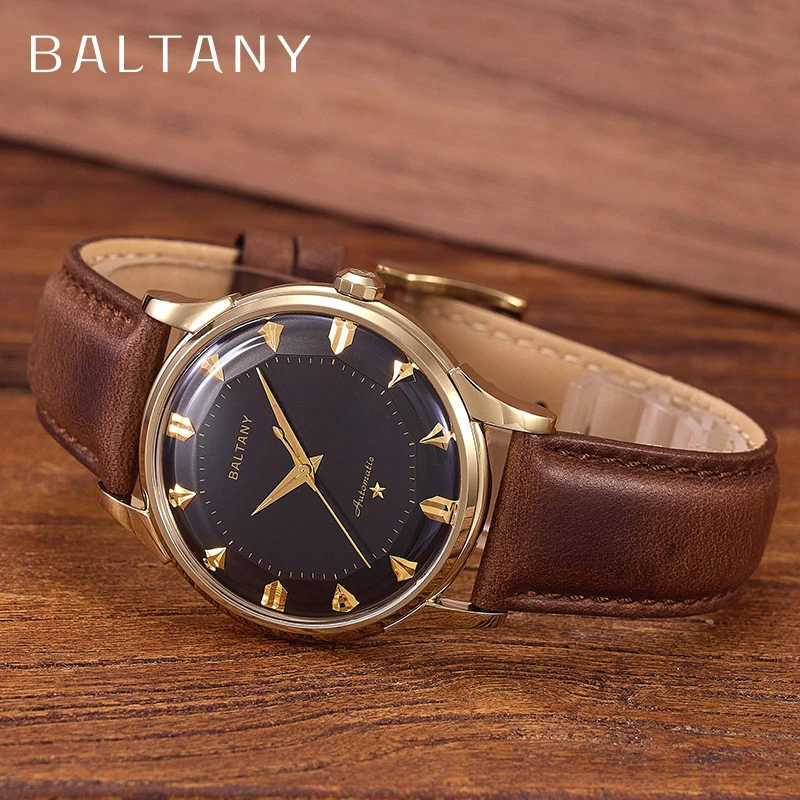
Essential Characteristic #3: Refined Leather Straps
The strap of a dress watch serves as both functional component and style statement, with leather reigning as the quintessential material choice. Beyond merely attaching the watch to your wrist, the right leather strap enhances the timepiece’s formal character while providing a comfortable connection to the wearer.
Traditional dress watch leather types include:
| Leather Type | Characteristics | Formal Suitability |
|---|---|---|
| Alligator | Fine scales, high sheen, formal appearance | Highest formality |
| Calfskin | Smooth texture, subtle grain, excellent flexibility | Versatile formality |
| Cordovan | Dense, smooth finish with distinctive color depth | Traditional elegance |
| Ostrich | Distinctive quill pattern, durable yet refined | Contemporary formal |
Color selection for dress watch straps traditionally follows simple rules: black for black-tie events and formal business attire, dark brown for navy suits and business casual settings. In recent years, navy blue and deep burgundy have gained acceptance in formal contexts as well.
Hardware elements on dress watch straps maintain the same commitment to elegance and restraint. Simple pin buckles, often in matching metal to the watch case, provide secure closure without bulk. Deployant clasps offer convenience while preserving the leather, though they must be slim enough to maintain the watch’s low profile.
Our collection of manual wind dress watches typically features these refined leather straps, showcasing how the right band completes the formal aesthetic.
Essential Characteristic #4: Limited Complications
A true dress watch embraces simplicity in functionality, prioritizing its primary purpose—telling time—above all else. While modern watches often feature numerous complications (additional functions beyond time-telling), dress watches deliberately limit these extras to maintain their clean aesthetics and slim profiles.
Acceptable complications in classic dress watches include:
– Small seconds hand (often in a subdial)
– Discreet date display (preferably at 3 or 6 o’clock)
– Ultra-thin power reserve indicators
– Very subtle moon phase displays (in higher-end pieces)
Complications that typically compromise the dress watch aesthetic:
– Chronographs (stopwatch functions)
– Rotating bezels
– Prominent day/date displays
– GMT or dual time zone functions
– Oversized moon phases
This restraint serves both aesthetic and practical purposes. Functionally, fewer complications allow for thinner movements, which in turn enable the slim case profiles that define dress watches. Aesthetically, simpler dials communicate elegance through their focused purpose and visual clarity.
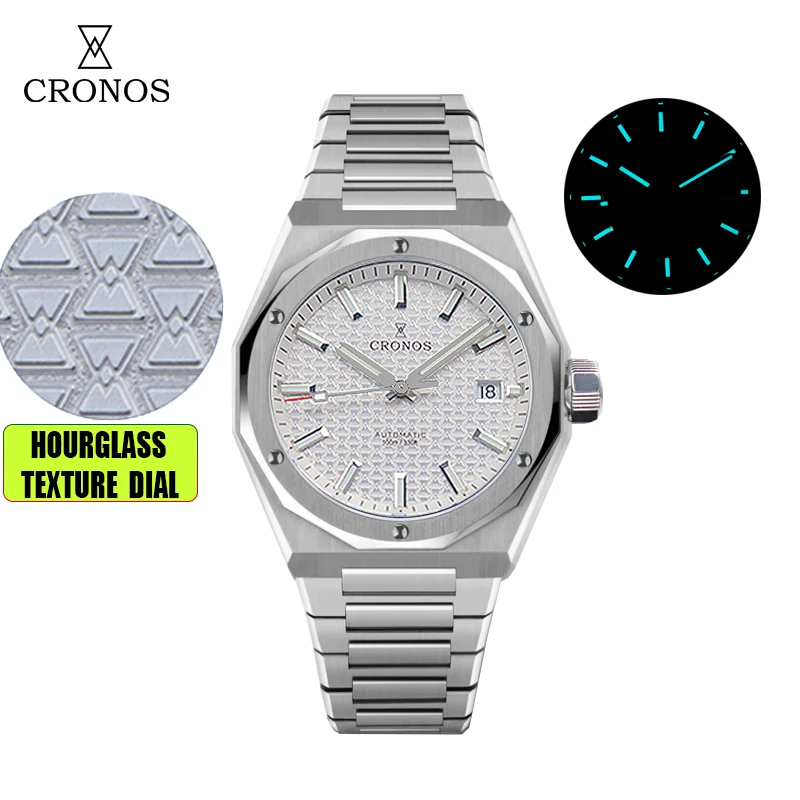
For those seeking to understand which features properly belong on formal timepieces, our quintessential guide to dress watch features offers detailed guidance on navigating these choices.
Essential Characteristic #5: Refined Movements
The heart of any fine timepiece is its movement, and dress watches typically house mechanisms that reflect their elegant exterior. The choice of movement affects not only the watch’s performance but also its profile, weight, and the emotional connection between timepiece and wearer.
Manual-Winding Movements
Pros:
– Traditionally thinner profile, allowing for slimmer cases
– Historical authenticity and connection to watchmaking heritage
– Daily winding ritual creates personal connection with the timepiece
Cons:
– Requires regular winding (typically every 36-48 hours)
– May be less convenient for occasional wear
Automatic Movements
Pros:
– Self-winding convenience
– Modern slim automatic calibers overcome traditional thickness limitations
– Often feature more refined finishing visible through display casebacks
Cons:
– Historically thicker than manual movements (though this gap has narrowed)
– May require a watch winder if not worn regularly
Quartz Movements
Pros:
– Exceptional accuracy
– No winding required
– Often more affordable
– Extremely thin profiles possible
Cons:
– Lacks the heritage appeal of mechanical movements
– Battery changes required periodically
While purists might insist on manual-winding movements for their traditional elegance and thinner profiles, modern innovations have made slim automatic movements equally viable for dress watches. Our classic manual wind watches collection showcases traditional approaches to elegant timekeeping.
Classic Automatic Dress Watches, Day Date Automatic Watches, Perpetual Calendar Automatic Watches
Price range: $540.60 through $574.60 Select options This product has multiple variants. The options may be chosen on the product pageClassic Automatic Dress Watches, GMT Automatic Watches, GMT Pilot Watches
Price range: $1,240.86 through $1,463.33 Select options This product has multiple variants. The options may be chosen on the product pageClassic Automatic Dress Watches, Thin Automatic Dress Watches
$437.64 Select options This product has multiple variants. The options may be chosen on the product pageClassic Manual Wind Watches, Manual Wind Dress Watches
Price range: $425.50 through $462.50 Select options This product has multiple variants. The options may be chosen on the product page- $104.12 Select options This product has multiple variants. The options may be chosen on the product page
Classic Automatic Dress Watches, GMT Automatic Watches, GMT Dive Watches
Price range: $468.93 through $552.94 Select options This product has multiple variants. The options may be chosen on the product page
Dress Watches vs. Other Watch Styles: A Clear Distinction
Understanding what makes a dress watch distinctive becomes clearer when comparing it to other major watch categories. Each style developed for specific purposes, resulting in meaningful differences in design, functionality, and appropriate contexts.
| Feature | Dress Watch | Sports Watch | Dive Watch | Field Watch |
|---|---|---|---|---|
| Case Thickness | 6-10mm | 12-15mm+ | 13-17mm+ | 10-14mm |
| Case Diameter | 34-40mm | 40-44mm+ | 40-45mm+ | 38-42mm |
| Water Resistance | 30-50m | 100m+ | 200m+ | 100m+ |
| Dial Design | Clean, minimal | Sporty, functional | High contrast, luminous | Utilitarian, legible |
| Strap/Bracelet | Leather | Metal/Rubber | Metal/Rubber | Nylon/Leather/Metal |
| Complications | Few or none | Various | Timing bezel | Often military time |
| Material Finish | Polished | Brushed/Polished | Brushed | Matte/Brushed |
| Primary Purpose | Complement formal attire | Active lifestyle | Underwater timing | Durability in field |
The distinctive character of dress watches lies not in ruggedness or specific functionality but in their refined aesthetics and ability to complement formal attire. While sports watches evolved for active use and dive watches for underwater exploration, dress watches developed for social settings where elegance takes precedence.
These distinctions extend to materials and finishes as well. Dress watches typically feature more polished surfaces and precious materials, while sports-oriented timepieces prioritize durability with brushed finishes and robust construction.
For those navigating the sometimes blurry boundaries between watch categories, our guide to dress versus casual watches provides further clarification. Those interested in different approaches to dress watch design will find our examination of classic versus modern dress watches illuminating.
When and How to Wear a Classic Dress Watch
While the rules governing dress watch etiquette have relaxed somewhat in recent years, understanding the traditional contexts and proper wearing techniques helps maximize the impact of these elegant timepieces.
Traditional occasions perfectly suited for classic dress watches:
– Formal business meetings
– Weddings and black-tie events
– Gala dinners
– Theater and orchestra performances
– Fine dining experiences
In modern fashion, dress watches have found their place in less formal settings as well. A fine dress watch can elevate business casual attire or add sophistication to smart casual ensembles. The key is ensuring the watch complements rather than conflicts with your overall look.
Proper dress watch wearing etiquette includes:
– Ensuring the watch fits comfortably under shirt cuffs
– Matching metals (watch case with belt buckle, cufflinks, etc.)
– Coordinating leather colors (watch strap with shoes and belt)
– Allowing the watch to peek out only when the arm is bent
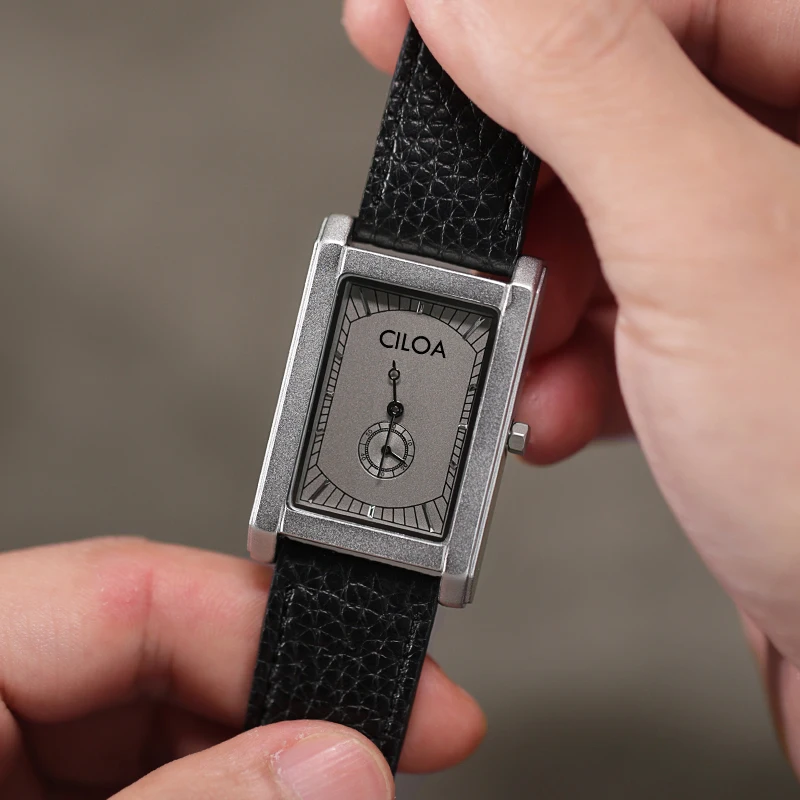
For those seeking distinctive formal options, our collection of square and rectangular automatic watches offers elegant alternatives to traditional round cases.
Selecting Your Perfect Classic Dress Watch
Finding the ideal dress watch requires balancing personal taste with practical considerations. When evaluating potential options, consider these key factors:
Physiological Considerations
– Wrist size (smaller wrists typically suit 34-38mm cases)
– Skin tone (affects ideal metal color choices)
– Dominant hand (affects comfort and wear patterns)
Style Preferences
– Personal aesthetic (traditional vs. contemporary)
– Typical attire (formal business, casual, varied)
– Other jewelry worn (should complement, not clash)
Practical Factors
– Budget constraints
– Maintenance requirements
– Wearing frequency
When evaluating quality across price ranges, look for:
– In entry-level pieces: clean dial printing, consistent finishing, solid case construction
– In mid-range pieces: higher-grade movements, sapphire crystals, superior strap quality
– In luxury pieces: in-house movements, hand-finishing, precious metals, heritage value
The choice between new, vintage, and pre-owned watches adds another dimension to the selection process. Vintage pieces offer unique character and history, while new watches provide modern reliability and warranty coverage. Pre-owned recent models often present value opportunities.
For comprehensive guidance on finding your perfect dress timepiece, our resources on how to identify the right dress watch and understanding what defines classic dress watches provide valuable insights.
The Enduring Appeal of Classic Dress Watches
The continued relevance of classic dress watches in our increasingly casual world speaks to their fundamental appeal beyond mere timekeeping. These refined instruments connect us to traditions of craftsmanship and elegance that transcend passing trends.
Unlike technology-driven products that become obsolete, a well-crafted dress watch often appreciates in both sentimental and monetary value over time. This quality makes them natural heirlooms, passing stories and craftsmanship from one generation to the next.
Modern watchmaking has found thoughtful ways to honor tradition while incorporating contemporary innovations. Improved materials, more precise manufacturing, and subtle design evolutions have enhanced the classic form without abandoning its essence.
Beyond their practical function, dress watches serve as personal statements—reflections of one’s appreciation for subtlety, craftsmanship, and timeless design. In a world of disposable products, they represent thoughtful consumption and appreciation for objects made to last.
Our definitive guide to dress watch design explores these enduring elements in greater detail, highlighting why these principles continue to resonate with watch enthusiasts and style-conscious individuals alike.
Frequently Asked Questions About Classic Dress Watches
Can a classic dress watch feature a metal bracelet instead of a leather strap?
Yes, but with caveats. A dress watch can work with a metal bracelet if it’s slim, refined, and features a simple design. Mesh “Milanese” bracelets or fine link designs can complement formal watches, though traditional leather remains the most versatile and formally appropriate choice.
Is it appropriate to wear a classic dress watch every day?
Yes, a dress watch can be worn daily, particularly in professional environments. However, its typically lower water resistance and more delicate construction may make it less suitable for active pursuits or harsh environments. Many watch enthusiasts reserve their dress pieces for office wear and special occasions.
Should a dress watch always be mechanical rather than quartz?
No, though mechanical movements are traditionally preferred. A well-designed quartz dress watch can be entirely appropriate, particularly when slim proportions and elegant design take precedence. The movement choice should be secondary to the watch’s overall aesthetics and suitability for formal contexts.
Are dress watches only for formal business attire?
No, while dress watches originated for formal settings, contemporary styling allows them to pair well with smart casual and business casual attire. The key is ensuring the watch’s refinement complements rather than conflicts with your overall look.
Can women wear traditional men’s dress watches?
Absolutely. Many women prefer the classic proportions and understated elegance of traditional dress watches. The current trend toward vintage-inspired sizing (34-38mm) has made many men’s dress watches particularly suitable for any wrist size appreciating classic proportions.

